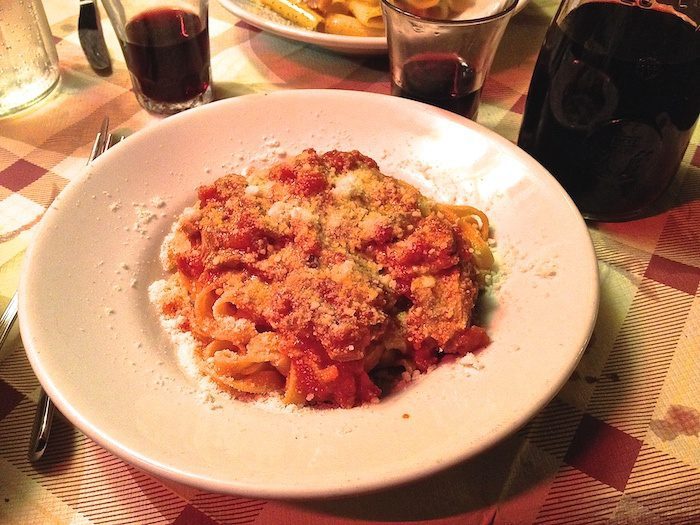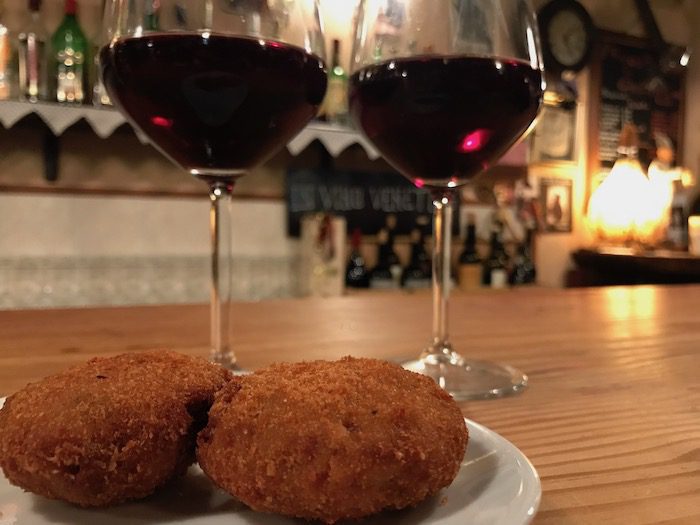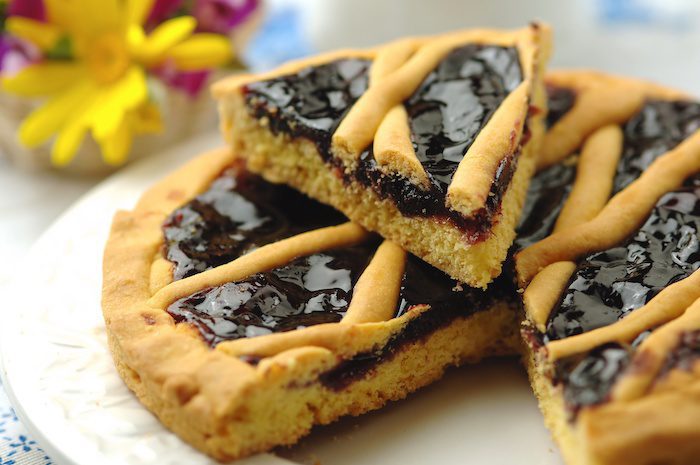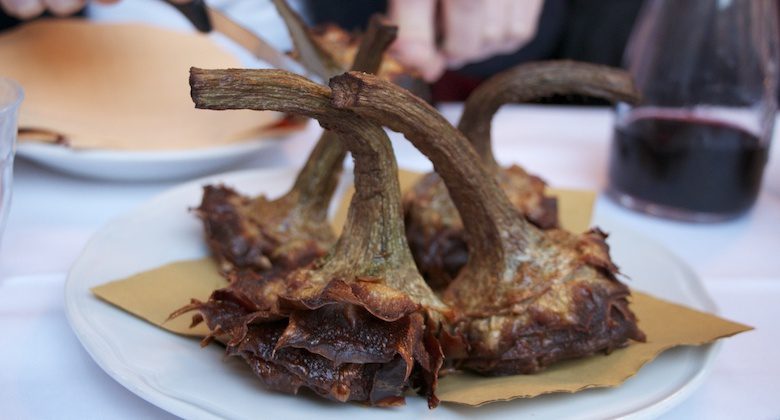Of course, you may have already heard about carbonara, amatriciana, fried artichokes and lasagna, and you might even have tasted them at least once. But other than the usual recipes, Roman cuisine offers a long list of recipes less known but always delicious. These dishes have a long history and every typical Roman trattoria has them on its menu as they are still widely appreciated by all the Romans. Let’s have a look into the unknown, but still delicious traditional Roman food.
Vignarola
Back in the day, this plate was prepared and eaten by middle-class people as it’s mostly made with simple ingredients. Even its name, vignarola, suggests its humble background as a vignarolo was the Roman word to indicate a farmer.
What you can find in vignarola is a mixture of ingredients such as peas, broad beans, seasoned bacon, artichokes, lettuce and a typical Roman herb called mentuccia, a type of mint. According to history, this plate comes from the Roman countryside, specifically from a small village called Velletri, where farmers used to grow these kinds of vegetables.
All the ingredients were rapidly cooked together and then eaten right away. The farmers’ philosophy was to avoid waste and so the idea of collecting all these ingredients in a single plate was born. Today, vignarola might be served in two versions: some cook it as a soup while some others serve it as a side plate. No matter how you serve it though, this forgotten plate from Roman tradition is always delicious!
Pajata
If you’ve already heard about trippa, you might notice some similarities with another unknown plate from Roman culinary

tradition: the pajata. Like many other dishes, this one was invented by lower-middle-class members who would not waste anything. Pajata is, in fact, a plate made with a calf’s middle intestine.
This specific part was slowly cooked for hours to let it release a kind of milk called chilo. When the intestine starts releasing this liquid, it’s time to add some tomato sauce and then let the two ingredients cooking together. Before serving, pajata is dressed with large amounts of Parmigiano-Reggiano cheese and then eaten while still very hot.
Another version, very well known by all the Romans, is rigatoni con la pajata, or rigatoni pasta dressed with pajata. This dish was invented a few years later and since then has spread all over the city and even all over Italy. The meat and the tomato sauce from pajata seem to be a perfect match with the rigatoni pasta as the sauce coming from both ingredients can create a dressing even more juicy and tasty than usual.
Supplì with animelle
If you’ve already been in an authentic Roman pizzeria, you should have noticed the presence of a common entry plate called supplì (fried rice with tomato and mozzarella). Its name, supplì, comes from French and it was used to indicate a sense of surprise.

Usually, every person that tastes supplì for the first time falls in love with it right away, even though there’s a lesser-known version of this dish which people might love even more: supplì with the animelle.
These animelle, or sweetbreads, are added in the initial mixture and they melt while the supplì fries, adding an even more juicy texture to the dish. Also, they taste like milk, which is why they were later replaced with mozzarella.
According to Roman tradition, the older supplì recipe included the animelle inside and not the mozzarella cheese, which was introduced after almost one century. As you might imagine, even this recipe comes from a humble tradition and it was invented to avoid the waste of food. Animelle and rice were both affordable ingredients that people use to eat every day. Sick and tired of the usual simple plates on the table, Roman people invented this new recipe, still loved by all the locals.
Visciole crostata
Roman typical cuisine doesn’t offer a large variety of sweets or cakes and the visciole crostata is one of the few exceptions still prepared in the city. An Italian crostata is usually a sort of pie that can be served with some jams, chocolate or cream on it. Visciole is an Italian fruit not so different from cherries for their color and taste. They’re used as a jam on this crostata for a sweet and perfect final result.

This pie comes from the Jewish tradition as, back in the days, Jews were not allowed to eat cheese. For this reason, they started to hide ricotta cheese in a crostata. In order to better hide this cheese, people started to add a visciole jam because of its dark color that would have easily hidden the presence of ricotta cheese.
Today, visciole are hard to find if you don’t know a specific farmer. Many Roman restaurants, though, are still able to find them in order to serve this delicious pie, loved and regularly eaten by many Romans.
If you are a real food lover, you cannot miss the chance to travel to Rome. Food is still one of the best attractions and Romans definitely do their best to keep tradition and quality alive. If you want to embrace a Roman culinary, join one our food tours and make your stomach happy!
Hey, we sell tours too!
The information provided is free, but we also sell tours in Italy at pretty reasonable prices. Taste your way through the Trastevere neighborhood during a Roman food tour. Looking for more experiences in Rome? Check out our selection of awesome Rome tours.
I Want More Italy!
- Check out our YouTube video and step-by-step guide about how to do Rome in a Day. If you’d rather let us guide you, check out our Rome tours.
- Not sure where to stay in Rome? Read this guide!
- Follow our adventures in Italy on Facebook, Instagram, and YouTube. Then, comment and tell us what you want us to cover next.


